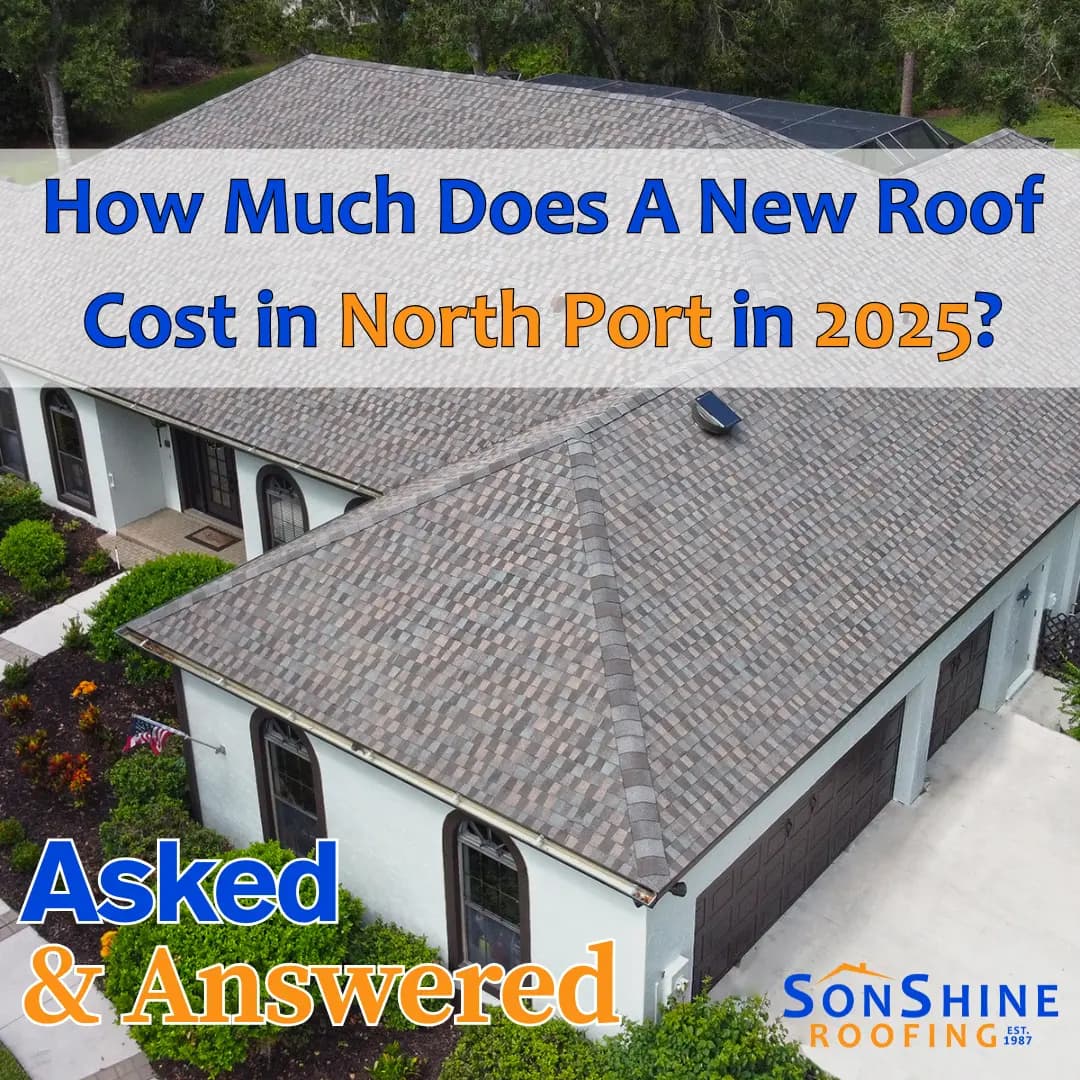Buy a home and live in it long enough, and eventually, you’ll either repair or replace the roof! But how long does that roof really last?
Here in Florida, where intense sun, storms, and salt air all take their toll, understanding your roof’s expected lifespan can help you plan and budget. In this post, we’ll answer a common homeowner question: What is the average roof lifespan?
What Is the Average Roof Lifespan?
Roof lifespan depends on several factors including:
- Florida’s harsh weather conditions
- The quality of the roofing materials
- Routine roof maintenance
With regular upkeep, an asphalt shingle roof in Florida can last anywhere from 15 to 30 years. High-quality shingles may even stretch that lifespan to 40 years. Other roofing materials can last longer:
- Tile roofs: 20–50 years
- Metal roofs: 40–70 years
- Slate roofs: Up to 100 years
However, since asphalt shingles are the most common roofing material in Florida, we’ll focus on their expected service life.
Florida’s Unique Roofing Challenges
Our beautiful state has its perks—but it’s not kind to roofs. Factors that reduce average roof lifespan in Florida include:
- High UV exposure from year-round sun
- Frequent rainstorms and hurricane-force winds
- Humidity and mold growth
- Salt air near coastal areas
Given these conditions, your roof may wear faster than the national average, making regular inspections essential.
How to Tell If Your Roof Needs Replacing
Not sure how old your roof is? Or wondering if it’s near the end of its lifespan? Look for these common warning signs:
- Missing, curling, or cracked shingles
- Bald spots or granules in gutters
- Leaks or water stains on ceilings
- Warped or sagging rooflines
If your roof is over 15 years old and showing signs of damage, it may be time to schedule a professional roof inspection.
Inspection vs. Replacement: What’s the Right Move?
Don’t assume age alone means replacement is necessary. A 16-year-old roof could have several years left with strategic repairs. Let a licensed roofing contractor inspect:
- Roof decking and structure
- Condition of shingles and flashing
- Ventilation and moisture buildup
- Gutters and drainage systems
After inspection, you’ll know if minor repairs will extend the roof’s life—or if a full replacement is more cost-effective.
Know Your Roof’s History
If you’re the original homeowner, check your records for installation details. Knowing the brand and grade of asphalt shingles can help estimate their performance and expected life. A poorly installed roof, no matter how expensive the materials, may not last.
If you’re not the first homeowner, schedule an inspection and request an estimate of remaining lifespan based on material condition and installation quality.
Protecting Your Roof and Your Home
Maintaining your roof through regular cleaning, inspections, and small repairs can help you reach the upper end of that average roof lifespan. After major storms, always inspect for damage or schedule an expert to assess the situation.
Schedule Your Roof Inspection Today
Still wondering how long your Sarasota roof will last? Whether you’re planning ahead or responding to recent weather, contact SonShine Roofing today. Our team has over 38 years of experience helping Florida homeowners understand their roof’s condition and lifespan.
Get peace of mind—schedule your inspection or request a quote today!













